The Remodeling market expects to grow from USD 4.50 trillion in 2020 to USD 6.30 trillion by 2028, at a CAGR of 4.3% during the forecast period 2021-2028.
Remodeling is the process of repairing or replacing a structure that is broken, damaged, or old. Commercial and residential remodeling are the most common types of remodeling. Remodeling can also relate to creating something new or bringing something back to life, and it can be used in social situations. In real estate, contracts, and interior design, the terms remodeling and renovating are sometimes used interchangeably. So basically, it's essentially a structural reform, change, or rejuvenation process. Remodeling has a higher frequency, and the CDW it produces can be directly utilized in the same project. It is more complex and potentially more circular than building or destruction. Digital technology is revolutionizing the remodeling industry by introducing several breakthroughs and new and improved ways. These are assisting top-tier architects all over the globe in visualizing and implementing their vivid and out-of-the-box concepts for a variety of projects.
The factors driving the market are growing pet adoption across the globe, increasing spending by owners on improving their residential places, increasing focus towards the exterior and interior replacements, and growth of infrastructure, particularly in terms of technological progress. The factors restraining the market growth are lack of efficiency in production processes, service operations across the entire supply chain, lack of skilled labor, and expensive costing. The consumer preferences shifting toward improved usefulness, advancement in technology, rapid increase in the Internet of things integration, and increasing spending power are expected to provide market growth opportunities.
This study delivers a comprehensive analysis of type, product, and region. The End User segment includes Residential [Interior Addition & Alterations {Kitchen, Bed Room, Other Room}, Exterior Addition & Alterations {Porch, Garage, Garden}, Others {Property Improvement, System & Equipment, Disaster Repair}] and Commercial [Remodeling, Hotel Remodeling, Office Space, Retail Space Remodeling, Restaurant Remodeling & Remodeling, Snow Removal. The Residential segment held the largest market share, owing to the steady gains in home prices and rising remodeling projects by homeowners. In addition, the incorporation of many technologies in various house remodeling projects, such as integrated home systems, remote access automation, and sustainable home energy management systems, will spur corporate growth.
The market has been divided into North America, Europe, Asia-Pacific, Middle East & Africa, and South America. The Asia Pacific holds the largest market share due to rapid industrialization, infrastructure development, rising disposable income, spending power, and technical improvements. The Europe region is anticipated to grow and hold the largest share, owing to the renovation rate, mainly to fight against climate changes, eco-friendly infrastructural development, and the economy.
Some of the notable players in the market are American Exteriors, Andersen Corporation, Case Design/Remodeling, Dow Building Solutions, Dreamstyle Remodeling, Harvey Building Products, Henkel Construction, Lutron Electronics, Masco Corporation, Owens Construction, Power Home Remodeling Group, Robert Bowden, State-wide Remodeling, The Home Depot, and The Sherwin -Williams Company.
Remodeling Market Analysis and Forecast, End-User
Remodeling Market Analysis and Forecast, Region
Report Description:
1. Introduction
1.1. Objectives of the Study
1.2. Market Definition
1.3. Research Scope
1.4. Currency
1.5. Key Target Audience
2. Research Methodology and Assumptions
3. Executive Summary
4. Premium Insights
4.1. Porter’s Five Forces Analysis
4.2. Value Chain Analysis
4.3. Top Investment Pockets
4.3.1. Market Attractiveness Analysis By End User
4.4. Industry Trends
5. Market Dynamics
5.1. Market Evaluation
5.2. Drivers
5.2.1. Increasing spending by owner on the improvement of their residential places
5.2.2. Increasing focus towards the exterior and interior replacements
5.2.3. Growth of infrastructure particularly in terms of technological improvement
5.3. Restrains
5.3.1. Lack of efficiency in production processes
5.3.2. Service operations across the entire supply chain
5.3.3. Lack of skilled labour
5.3.4. Expensive costing
5.4. Opportunities
5.4.1. Consumer preferences shifting toward improved usefulness & attractiveness
5.4.2. Rapid increase in the Internet of things integration
5.4.3. Advancement in technology
5.4.4. Increasing spending power
6. Global Remodeling Market Analysis and Forecast, By End User
6.1. Segment Overview
6.2. Residential
6.3. Commercial
7. Global Remodeling Market Analysis and Forecast, By Regional Analysis
7.1. Segment Overview
7.2. North America
7.2.1. U.S.
7.2.2. Canada
7.2.3. Mexico
7.3. Europe
7.3.1. Germany
7.3.2. France
7.3.3. U.K.
7.3.4. Italy
7.3.5. Spain
7.4. Asia-Pacific
7.4.1. Japan
7.4.2. China
7.4.3. India
7.5. South America
7.5.1. Brazil
7.6. Middle East and Africa
7.6.1. UAE
7.6.2. South Africa
8. Global Remodeling Market-Competitive Landscape
8.1. Overview
8.2. Market Share of Key Players in Global Remodeling Market
8.2.1. Global Company Market Share
8.2.2. North America Company Market Share
8.2.3. Europe Company Market Share
8.2.4. APAC Company Market Share
8.3. Competitive Situations and Trends
8.3.1. Product Launches and Developments
8.3.2. Partnerships, Collaborations, and Agreements
8.3.3. Mergers & Acquisitions
8.3.4. Expansions
9. Company Profiles
9.1. American Exteriors
9.1.1. Business Overview
9.1.2. Company Snapshot
9.1.3. Company Market Share Analysis
9.1.4. Company Product Portfolio
9.1.5. Recent Developments
9.1.6. SWOT Analysis
9.2. Andersen Corporation
9.2.1. Business Overview
9.2.2. Company Snapshot
9.2.3. Company Market Share Analysis
9.2.4. Company Product Portfolio
9.2.5. Recent Developments
9.2.6. SWOT Analysis
9.3. Case Design/Remodeling
9.3.1. Business Overview
9.3.2. Company Snapshot
9.3.3. Company Market Share Analysis
9.3.4. Company Product Portfolio
9.3.5. Recent Developments
9.3.6. SWOT Analysis
9.4. Dow Building Solutions
9.4.1. Business Overview
9.4.2. Company Snapshot
9.4.3. Company Market Share Analysis
9.4.4. Company Product Portfolio
9.4.5. Recent Developments
9.4.6. SWOT Analysis
9.5. Dreamstyle Remodeling
9.5.1. Business Overview
9.5.2. Company Snapshot
9.5.3. Company Market Share Analysis
9.5.4. Company Product Portfolio
9.5.5. Recent Developments
9.5.6. SWOT Analysis
9.6. Harvey Building Products
9.6.1. Business Overview
9.6.2. Company Snapshot
9.6.3. Company Market Share Analysis
9.6.4. Company Product Portfolio
9.6.5. Recent Developments
9.6.6. SWOT Analysis
9.7. Henkel Construction
9.7.1. Business Overview
9.7.2. Company Snapshot
9.7.3. Company Market Share Analysis
9.7.4. Company Product Portfolio
9.7.5. Recent Developments
9.7.6. SWOT Analysis
9.8. Lutron Electronics
9.8.1. Business Overview
9.8.2. Company Snapshot
9.8.3. Company Market Share Analysis
9.8.4. Company Product Portfolio
9.8.5. Recent Developments
9.8.6. SWOT Analysis
9.9. Masco Corporation
9.9.1. Business Overview
9.9.2. Company Snapshot
9.9.3. Company Market Share Analysis
9.9.4. Company Product Portfolio
9.9.5. Recent Developments
9.9.6. SWOT Analysis
9.10. Owens Construction
9.10.1. Business Overview
9.10.2. Company Snapshot
9.10.3. Company Market Share Analysis
9.10.4. Company Product Portfolio
9.10.5. Recent Developments
9.10.6. SWOT Analysis
9.11. Power Home Remodeling Group
9.11.1. Business Overview
9.11.2. Company Snapshot
9.11.3. Company Market Share Analysis
9.11.4. Company Product Portfolio
9.11.5. Recent Developments
9.11.6. SWOT Analysis
9.12. Robert Bowden,
9.12.1. Business Overview
9.12.2. Company Snapshot
9.12.3. Company Market Share Analysis
9.12.4. Company Product Portfolio
9.12.5. Recent Developments
9.12.6. SWOT Analysis
9.13. State-wide Remodeling
9.13.1. Business Overview
9.13.2. Company Snapshot
9.13.3. Company Market Share Analysis
9.13.4. Company Product Portfolio
9.13.5. Recent Developments
9.13.6. SWOT Analysis
9.14. The Home Depot
9.14.1. Business Overview
9.14.2. Company Snapshot
9.14.3. Company Market Share Analysis
9.14.4. Company Product Portfolio
9.14.5. Recent Developments
9.14.6. SWOT Analysis
9.15. The Sherwin -Williams Company
9.15.1. Business Overview
9.15.2. Company Snapshot
9.15.3. Company Market Share Analysis
9.15.4. Company Product Portfolio
9.15.5. Recent Developments
9.15.6. SWOT Analysis
List of Table
1. Global Remodeling Market, By End User, 2018-2028 (USD Trillion)
2. Global Residential, Remodeling Market, By Region, 2018-2028 (USD Trillion)
3. Global Commercial, Remodeling Market, By Region, 2018-2028 (USD Trillion)
4. North America Remodeling Market, By End User, 2018-2028 (USD Trillion)
5. U.S. Remodeling Market, By End User, 2018-2028 (USD Trillion)
6. Canada Remodeling Market, By End User, 2018-2028 (USD Trillion)
7. Mexico Remodeling Market, By End User, 2018-2028 (USD Trillion)
8. Europe Remodeling Market, By End User, 2018-2028 (USD Trillion)
9. Germany Remodeling Market, By End User, 2018-2028 (USD Trillion)
10. France Remodeling Market, By End User, 2018-2028 (USD Trillion)
11. U.K. Remodeling Market, By End User, 2018-2028 (USD Trillion)
12. Italy Remodeling Market, By End User, 2018-2028 (USD Trillion)
13. Spain Remodeling Market, By End User, 2018-2028 (USD Trillion)
14. Asia Pacific Remodeling Market, By End User, 2018-2028 (USD Trillion)
15. Japan Remodeling Market, By End User, 2018-2028 (USD Trillion)
16. China Remodeling Market, By End User, 2018-2028 (USD Trillion)
17. India Remodeling Market, By End User, 2018-2028 (USD Trillion)
18. South America Remodeling Market, By Product, 2018-2028 (USD Trillion)
19. Brazil Remodeling Market, By End User, 2018-2028 (USD Trillion)
20. Middle East and Africa Remodeling Market, By End User, 2018-2028 (USD Trillion)
21. UAE Remodeling Market, By End User, 2018-2028 (USD Trillion)
22. South Africa Remodeling Market, By End User, 2018-2028 (USD Trillion)
List of Figures
1. Global Remodeling Market Segmentation
2. Global Remodeling Market: Research Methodology
3. Market Size Estimation Methodology: Bottom-Up Approach
4. Market Size Estimation Methodology: Top-Down Approach
5. Data Triangulation
6. Porter’s Five Forces Analysis
7. Value Chain Analysis
8. Global Remodeling Market Attractiveness Analysis By End User
9. Global Remodeling Market Attractiveness Analysis By Region
10. Global Remodeling Market: Dynamics
11. Global Remodeling Market Share by End User (2021 & 2028)
12. Global Remodeling Market Share by Product (2021 & 2028)
13. Global Remodeling Market Share by Regions (2021 & 2028)
14. Global Remodeling Market Share by Company (2020)
Market research is a method of gathering, assessing and deducing data & information about a particular market. Market research is very crucial in these days. The techniques analyze about how a product/service can be offered to the market to its end-customers, observe the impact of that product/service based on the past customer experiences, and cater their needs and demands. Owing to the successful business ventures, accurate, relevant and thorough information is the base for all the organizations because market research report/study offers specific market related data & information about the industry growth prospects, perspective of the existing customers, and the overall market scenario prevailed in past, ongoing present and developing future. It allows the stakeholders and investors to determine the probability of a business before committing substantial resources to the venture. Market research helps in solving the marketing issues challenges that a business will most likely face.
Market research is valuable because of the following reasons:
Our research report features both the aspects; qualitative and quantitative. Qualitative part provides insights about the market driving forces, potential opportunities, customer’s demands and requirement which in turn help the companies to come up with new strategies in order to survive in the long run competition. The quantitative segment offers the most credible information related to the industry. Based on the data gathering, we use to derive the market size and estimate their future growth prospects on the basis of global, region and country.
Our market research process involves with the four specific stages.

Data Collection: This stage of the market research process involves with the gathering and collecting of the market/industry related data from the sources. There are basically two types of research methods:
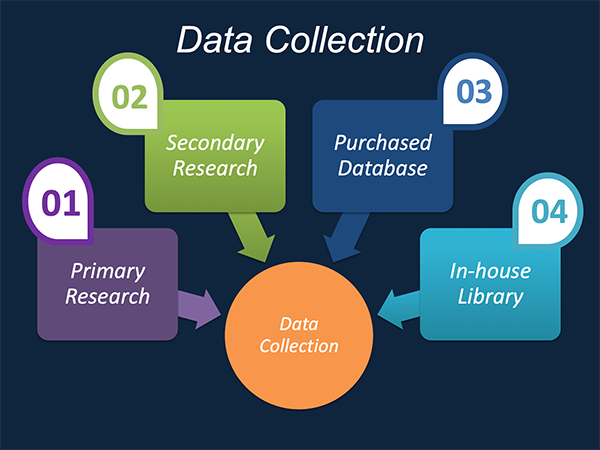
Data Synthesis: This stage includes the evaluation and assessment of all the data acquired from the primary and secondary research. It likewise includes in evaluating the information for any disparity watched while information gathering identified with the market. The data & information is gathered with consideration to the heterogeneity of sources. Scientific and statistical methods are implemented for synthesizing dissimilar information sets and provide the relevant data which is fundamental for formulating strategies. Our organization has broad involvement with information amalgamation where the information goes through different stages:


Market Formulation & Deduction: The last stage includes assigning the data & information in a suitable way in order to derive market size. Analyst reviews and domain based opinions based on holistic approach of market estimation combined with industry investigation additionally features a crucial role in this stage.
This stage includes with the finalization of the market size and numbers that we have gathered from primary and secondary research. With the data & information addition, we ensure that there is no gap in the market information. Market trend analysis is finished by our analysts by utilizing data extrapolation procedures, which give the most ideal figures to the market.
Data Validation: Validation is the most crucial step in the process. Validation & re-validation through scientifically designed technique and process that helps us finalize data-points to be used for final calculations. This stage also involves with the data triangulation process. Data triangulation generally implicates the cross validation and matching the data which has been collected from primary and secondary research methods.





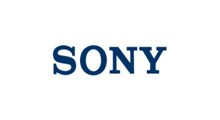

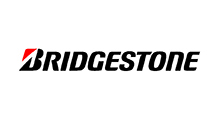

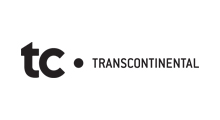















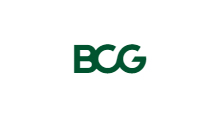


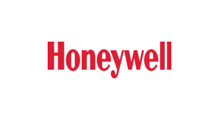

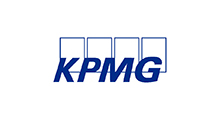
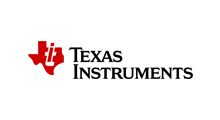



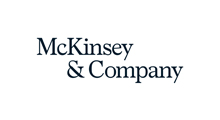

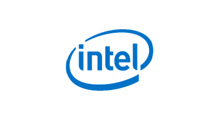







Free Customization
Countries can be added on demand
Free yearly update on purchase of Multi/Corporate User License
Companies served till date

We serve our customers 24x7 for 365 days through calls, emails and live chat options.

Huge database of exceptional market reports bringing market intelligence to your fingertips.

SSL enabled, we offer you various secured payment options for risk free purchase.